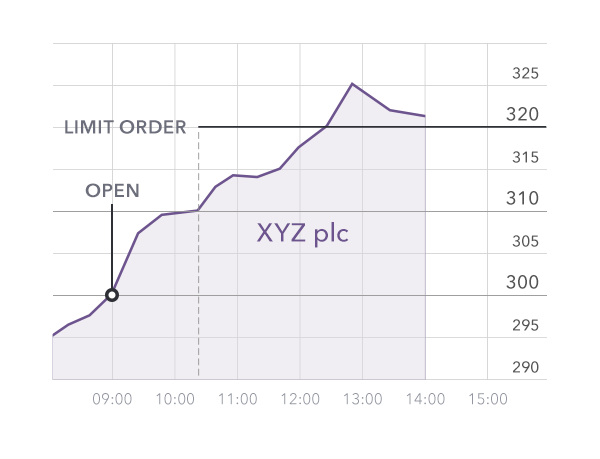Suppose you decide you’re ready to open or close a trade – how do you do it?
You’ll need to give your broker or trading provider the details so they can buy or sell on your behalf, and this is called placing an order.
What is an order?
An order is simply an instruction to buy or sell an asset.
There are various types of order, enabling you either to trade immediately or to wait until certain market conditions occur.
Once you’ve placed an order, you’re free to turn your attention away from trading and leave the order to get on with the job in your absence. Depending on the type of order you choose, it can automatically:
- Open a trade at the time when you judge the conditions are just right
- Lock in profits by closing a trade when your target level is reached
- Limit losses by closing a trade when the price moves against you by a certain amount
You’ll see how to choose the right order to do each of these things as we go through the different types in detail below.
Market orders
If you simply want to deal immediately at the best price available, a market order is the one to use.
Provided the market is liquid enough – in other words, if there are enough willing buyers and sellers around at the time – your market order will be executed immediately.
An order that has been executed is called a ‘filled’ order.
It’s important to be aware that market orders can be filled at a worse price than the current bid/ask price. We’ll explain how this happens later in this course.
Limit orders
On occasions when you want to wait until a price reaches a more favourable level before you trade, you’ll need to use a limit order.
A limit order is an instruction to trade if a market’s price reaches a particular level that’s more favourable than the current price.
Example
Let’s say GBP/USD is currently trading at 1.5055. Your analysis suggests that if it rises to 1.5065 it’s then likely to fall again, so you decide to sell GBP/USD if it reaches 1.5065.
Rather than sitting in front of your screen monitoring the market, you place a limit order (known as a limit entry order) to open a short trade if the price hits 1.5065.
Two hours later, the market does indeed hit this level. Your broker executes your order and you sell GBP/USD.
Your trade then works in the normal way – so if GBP/USD falls as you predicted, you make a profit. If it continues to rise, however, you make a loss.
As well as using a limit order to open a new trade, you can also use it to close an existing position – protecting your profit if you’re concerned the market might change direction and wipe out your gains.
Question

Imagine you buy shares in XYZ plc, currently trading at 300p. Later, you see the price has risen to 310p. You’re not tempted to sell yet, as you think the market will keep going up.
However, you believe it’s likely the upward trend could reverse if the price goes above 320p, so you set a limit order to close your trade if XYZ plc reaches 320p.
Later, the price rises to 325p then starts to decline again. What happens to your trade?
- a Your limit order is triggered and your trade is closed at 320p
- b Your limit order is triggered and your trade is closed at 325p
- c Your limit order doesn’t trigger, and your trade stays open


